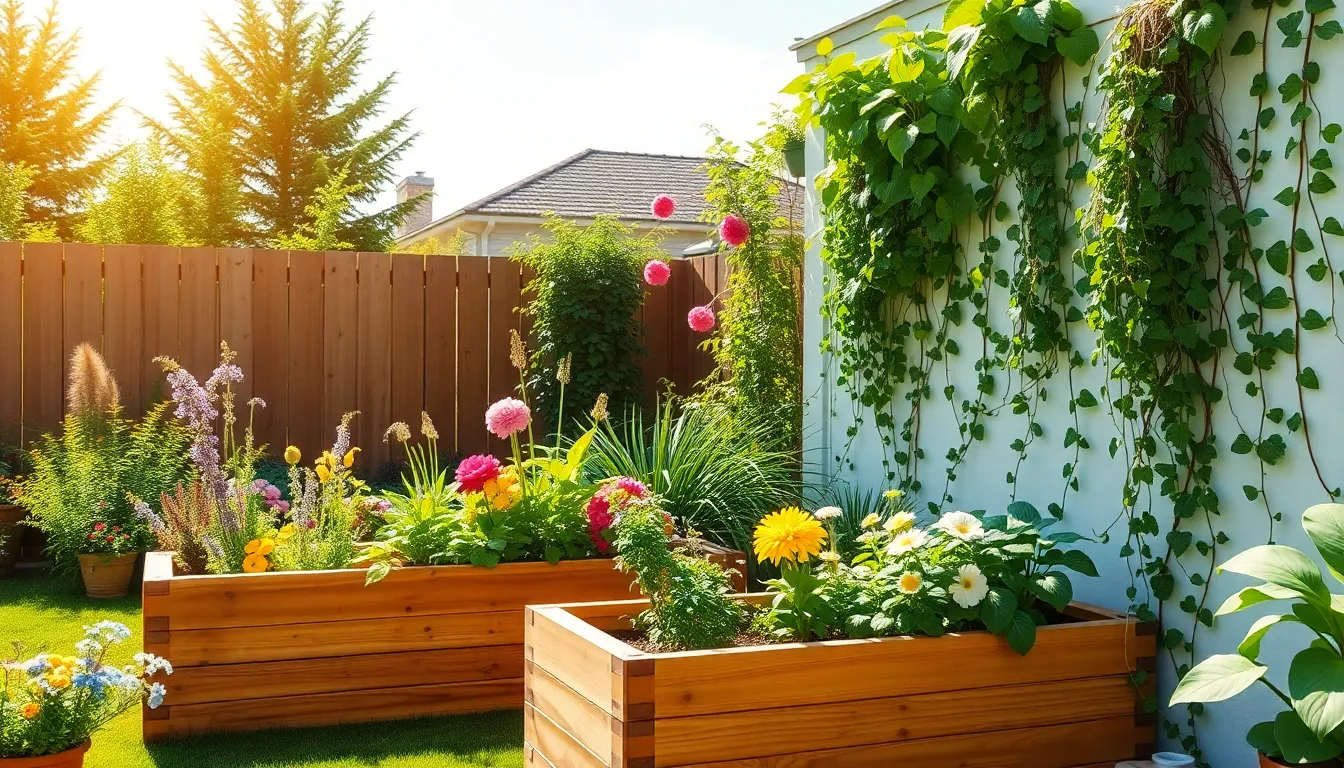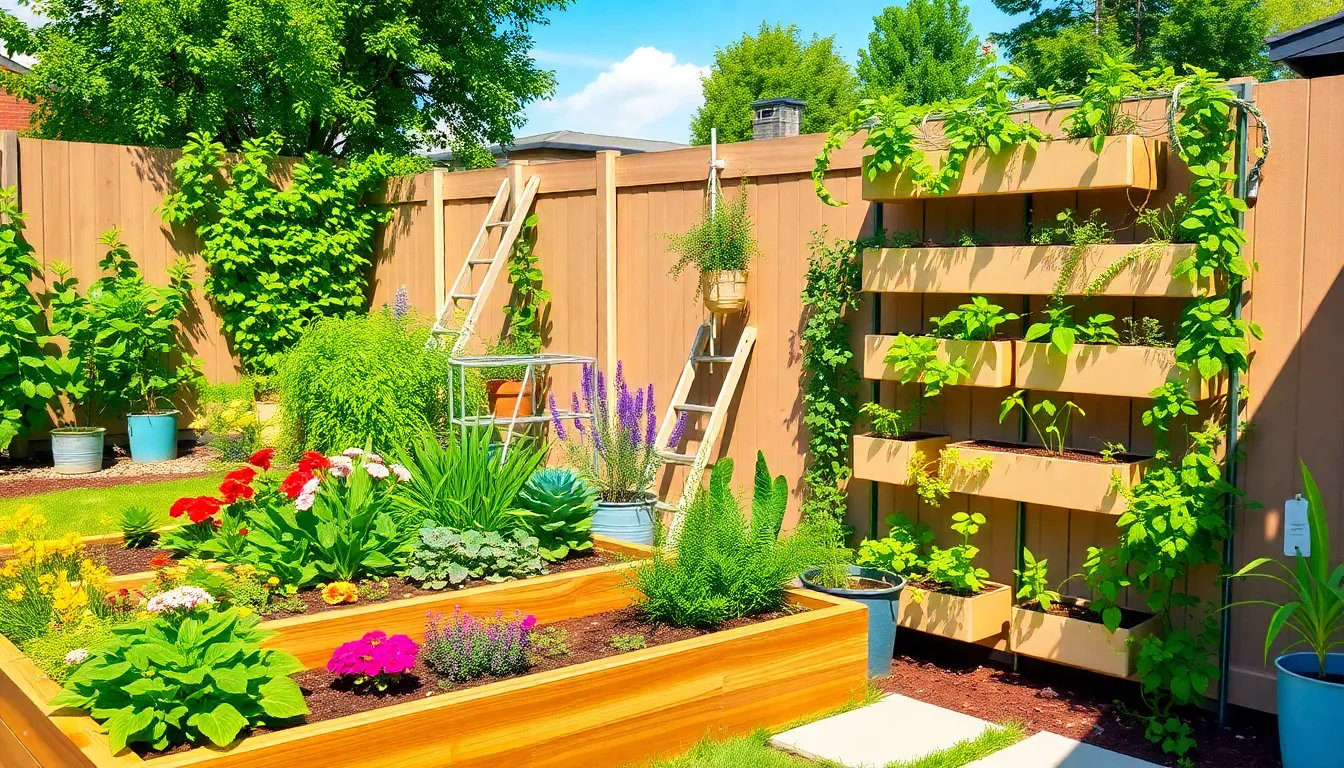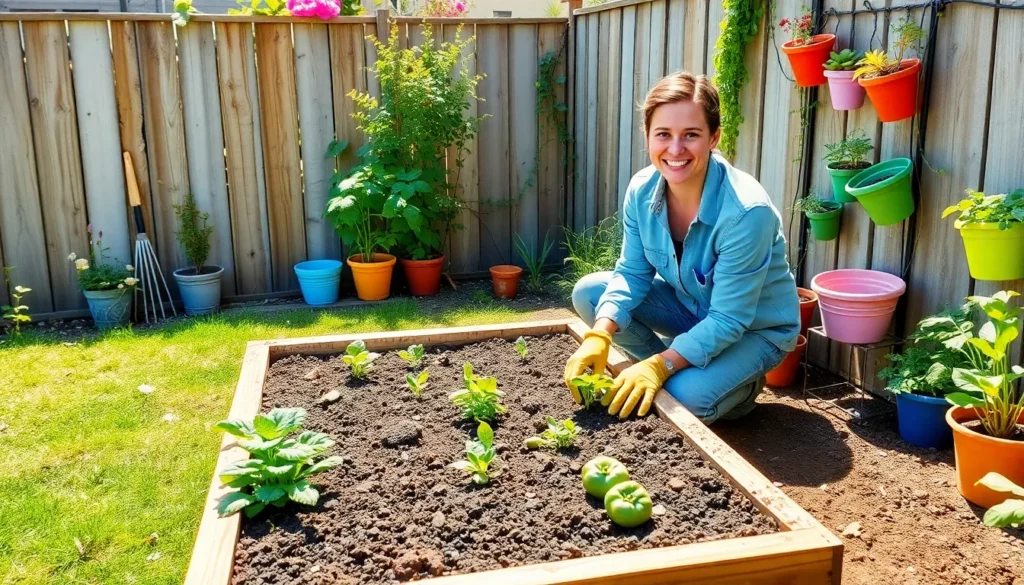Transforming a backyard into a garden paradise doesn’t have to require a degree in horticulture or a budget that rivals a small country’s GDP. With a sprinkle of creativity and a dash of elbow grease, anyone can dive into the world of DIY garden projects. Whether it’s building a charming raised bed or crafting whimsical garden art, the possibilities are endless—and so are the compliments from neighbors who’ll think you’ve got a green thumb.
Table of Contents
ToggleBenefits Of DIY Garden Projects
Transforming an outdoor space offers a wealth of benefits through DIY garden projects. Engaging in these projects can enhance budget management while allowing for personal expression.
Cost Efficiency
DIY garden projects often save money. Creating raised beds or unique decorations generally incurs lower expenses than hiring professionals. Materials can be sourced from local suppliers or repurposed items. For instance, using reclaimed wood or stones reduces costs while adding character. Many projects allow for incremental investment over time, ensuring affordability. Communities may also offer plant exchanges or free workshops, further minimizing expenses.
Personalization
Personalization stands out as a crucial advantage of DIY garden projects. Individuals can tailor their gardens to reflect personal styles and preferences. Color schemes, plant varieties, and design layouts become opportunities for creative expression. One person’s garden might feature native plants, while another could emphasize a butterfly-friendly habitat. Each detail, from seating areas to pathways, contributes to a unique outdoor experience. Ultimately, these personalized touches create spaces that resonate with the gardener’s vision and lifestyle.
Popular Types Of DIY Garden Projects


Many options exist for engaging in DIY garden projects that enhance outdoor spaces. Individuals can choose projects that fit their style, budget, and available space.
Raised Garden Beds
Raised garden beds provide an effective way to grow vegetables and flowers. These structures improve drainage, allowing plants to thrive. Constructing them typically involves wood, stone, or recycled materials. Dimensions can vary based on preference, with common sizes ranging from 4×4 feet to 4×8 feet. Placing the beds in a sunny location maximizes growth potential. Adding soil amendments, such as compost or peat moss, enriches the soil. This method promotes easier access for planting and weeding, reducing back strain.
Vertical Gardens
Vertical gardens utilize space efficiently by allowing plants to grow upward. These installations can transform blank walls into vibrant green spaces, increasing aesthetic appeal. Common materials include trellises, wall pockets, and modular planters. Choose climbing plants or trailing vines to create lush displays. Integrating herbs or succulents provides variety and functionality. A watering system can help maintain moisture levels, ensuring plants remain healthy. These gardens not only beautify areas but also improve air quality and provide insulation.
Essential Tools And Materials
Successful DIY garden projects require the right tools and materials. Gathering these essentials promotes efficiency and creativity in gardening.
Gardening Tools
Basic gardening tools include a trowel, hand pruners, gloves, and a watering can. A shovel aids in digging, while a rake helps level soil and collect debris. The addition of a hoe enhances weed control and soil cultivation. Finalizing this kit with a garden fork ensures soil aeration and mixing. Correct tools increase productivity and reduce effort during projects.
Recommended Materials
Quality materials enhance the overall aesthetic and longevity of garden projects. Consider using untreated wood for raised beds, as it’s durable and safe for plants. Organic soil provides essential nutrients for healthy growth, while mulch conserves moisture and suppresses weeds. Choosing non-toxic paints or stains helps customize garden art safely. Emphasizing local sourcing supports sustainability and minimizes costs, ensuring a unique touch to every project.
Step-By-Step Project Guides
Each DIY garden project can bring unique appeal to an outdoor space. With simple steps, anyone can create something beautiful.
Building A Raised Bed
First, select a location that receives ample sunlight. Choose untreated wood to avoid chemicals leaching into the soil. Cut the wood into four equal sides, typically 2×4 boards, to form the frame. Next, drill the corners together for stability. After assembly, fill the bed with organic soil, ensuring proper drainage. Incorporate compost for enriched nutrients. Finally, plant vegetables or flowers based on personal preference. Raised beds simplify maintenance and improve overall gardening efficiency.
Creating A Vertical Garden
Begin by finding a suitable wall or structure for the garden. Use pots, pallets, or vertical planters to create a visually engaging display. Drill or secure the planters in place to prevent any slippage. Select plants that thrive in vertical spaces, like herbs or succulents. Water regularly, ensuring that the plants receive adequate moisture. Additionally, arrange plants based on sunlight needs to optimize growth. This project maximizes limited space while adding vibrant greenery to outdoor areas.






